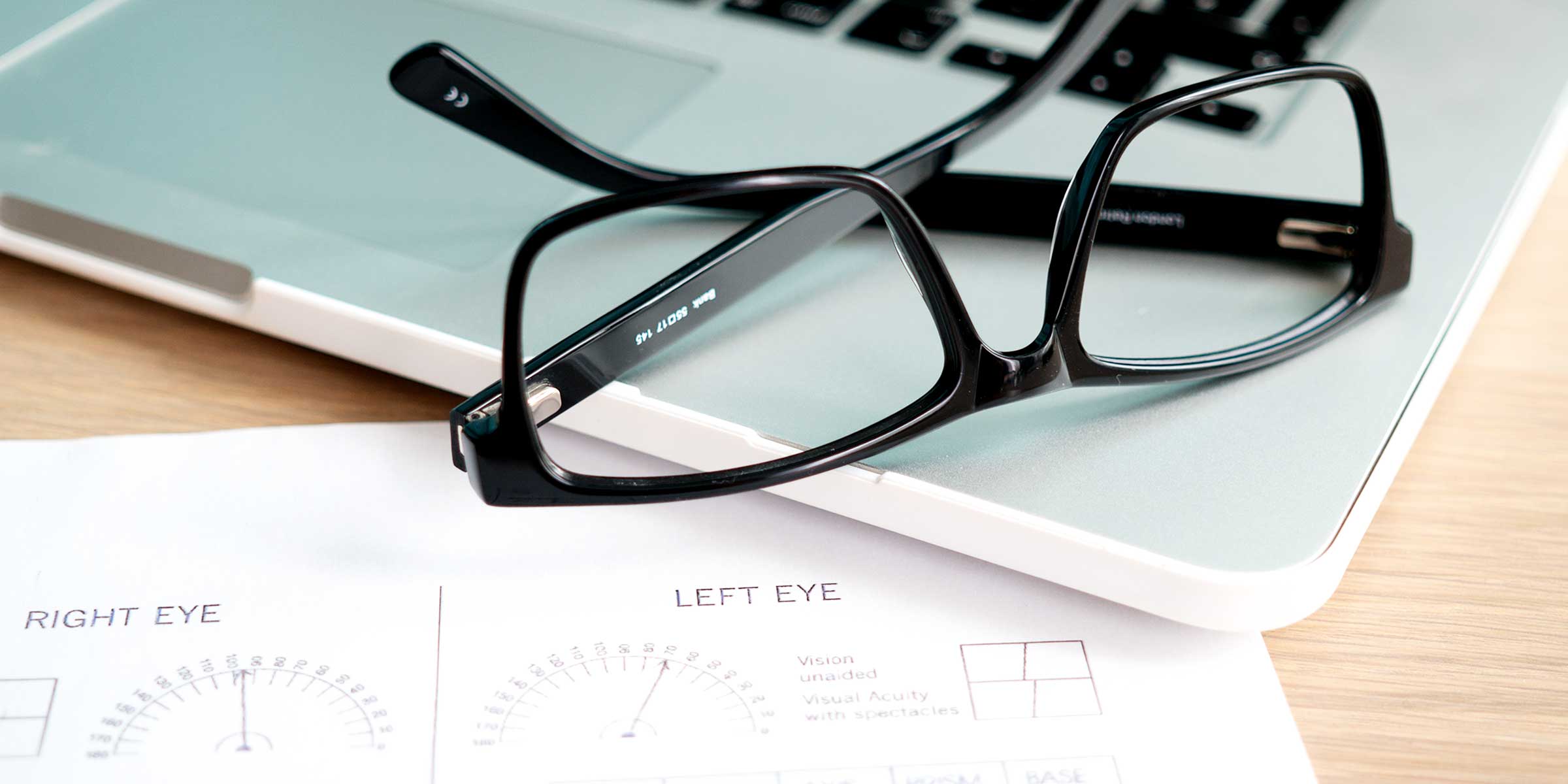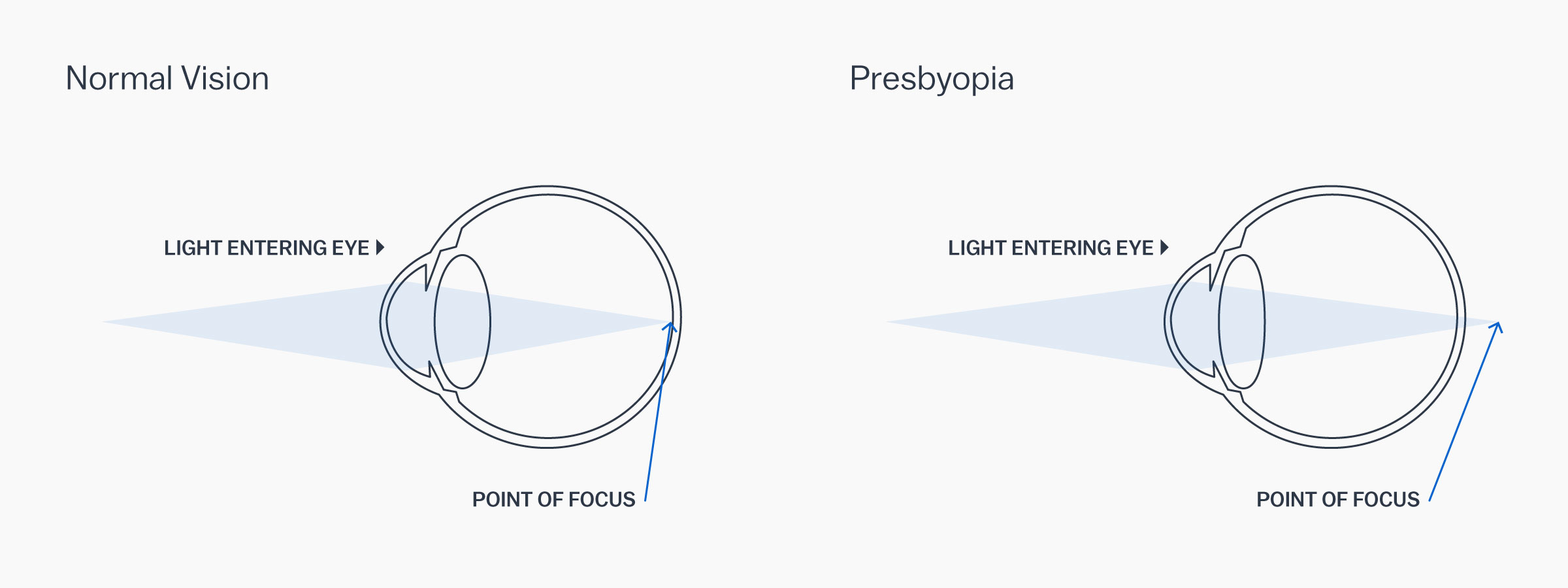What is Presbyopia?
Presbyopia is Greek for ‘old sight’ and will affect anyone over the age of about 40. When we reach that age our ability to focus on near objects diminishes. The eye’s lens loses flexibility and stiffens with age so it has more difficulty helping focus the image from near objects on the retina.
The process by which the lens changes shape to alter focus of images on the retina is called ‘accommodation’ and is controlled by ciliary muscles. These contract and relax to make the lens flatter or thicker depending on whether the object we want to look at is far away or close by. This changing in shape of the lens works in conjunction with pupil constriction and convergence to focus images from near objects on the retina. It is an automatic reflex controlled by the parasympathetic nervous system.
Symptoms of Presbyopia

If you suffer from Presbyopia you’ll be aware that you have to hold close objects like your phone or a book further away to see them clearly. The older you get the further away you’ll have to hold them and you may also experience headaches, eye strain, and tired eyes. All these are signs that you need help to see close objects and you should visit your optician to have an eye examination.
You can tell from your prescription if you are presbyopic in one of two ways. Your prescription will either contain a ‘reading addition’, or ‘Add’, or the prescription will be written out as your full long distance prescription and underneath your full reading prescription. The Add is the extra magnification you need to be able to read up close. The size of the reading addition increases as you get older.

Prescription with Add written
How is Presbyopia corrected?
There are a number of different options to correct Presbyopia. Having a pair of reading glasses is the simplest solution, but you’ll have to keep taking them off and on depending on what task you’re doing, which is very annoying.
Bifocals are another option, where the main lens is for long distance and a small segment is stuck on to the bottom of the lens that you can look through to read. The main issues with bifocals are that they look aging due to the visible dividing line, and there is a sudden change in lens power between the long distance and reading parts of the lens which can be disconcerting.
Once over the age of about 50, as your accommodation deteriorates further, you will need a separate correction for near and intermediate distances, which will make single vision and bifocal lens options much trickier.
By far the most popular solution for all presbyopes is using progressive add lenses. These allow you to see all distances through the same lens. A varifocal can be defined as having two fixed reference points - your long distance prescription at the top of the lens, and your reading prescription at the bottom - separated by a corridor that increases in magnification from the top of the lens – your distance prescription- until it reaches the bottom – your reading prescription.
Due to the way varifocals are made to achieve this progression they do have some distortion at the edge of the lens, which can take time to adjust to if you’re not used to wearing them, though most people can adapt to them easily with a little perseverance. Once you’re used to them they’re by far the most convenient option as one pair of glasses will enable you to see all distances clearly. Please see our guide to varifocals for more information on the many different types of varifocal lenses available.
Choosing glasses for Presbyopia

Modern designs of varifocal lenses mean there is far less limitation on the size of the frames than there once was. Provided you choose a frame with a lens depth of 26mm we’ll be able to make varifocals for you. However, if it’s your first try with varifocals we’d recommend you choose a frame whose depth is 30mm or greater as this will speed up your adaption time to the new lenses.
Varifocals are available with the same thin lens and tinting options as single vision lenses. Please see our helpful guide on thin lenses to see if your prescription would benefit from thinner lenses.

